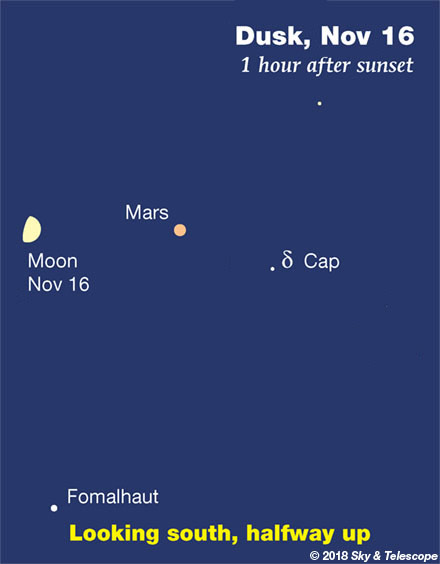
Friday, November 16
• Very high in the south is the Great Square of Pegasus. Its right-hand side points down toward the Moon. Closer to the right of the Moon is Mars, as shown here.
Saturday, November 17
• When you see the waxing gibbous Moon passing highest in the south in early evening tonight, it's straight below the Great Square of Pegasus, which is level and upright.
• The Leonid meteor shower, which has been very weak this decade, should be at its modest best late tonight during the three hours between moonset and the beginning of Sunday's dawn. Have patience.
Sunday, November 18
• Now the Great Square's left side points down toward the Moon.
• We're two thirds of the way through fall this week, so Capella shines in the northeast as soon as the stars come out. As night grows darker, look to its right by about three fists at arm's length for the frosty little Pleiades cluster. It's the size of your fingertip at arm's length.
Orange Aldebaran climbs up below the Pleiades. By about 8 p.m., depending on your location, Orion is clearing the horizon below Aldebaran.
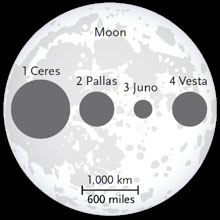
Monday, November 19
• The asteroid 3 Juno is at opposition this week — and the closest to Earth it will come from 1980 to 2060! That means it's now as bright as magnitude 7.4, visible in large binoculars but still not very bright for such a low-numbered asteroid. Juno is substantially smaller than 1 Ceres, 2 Pallas, or 4 Vesta; only by a stroke of luck was it the third asteroid discovered.
Juno is in northern Eridanus south of Taurus, in high view by late evening. See the article and finder chart in the November Sky & Telescope, page 49.
Tuesday, November 20
• Whenever Fomalhaut is "southing" (crossing the meridian due south, which it does around 7 or 8 p.m. this week), the first stars of Orion are just about to rise above the east horizon. And the Pointers of the Big Dipper stand upright low due north, straight below Polaris.
Wednesday, November 21
• Does the Sun already seem to be setting about as early as it ever will? You're right! We're still a whole month away from the winter solstice — but the Sun sets its earliest around December 7th if you're near latitude 40° north, and right now it already sets within only about 3 minutes of that time.
A surprising result of this: The Sun actually sets a trace earlier on Thanksgiving than on Christmas — even though Christmas is around solstice time!
This offset from the solstice date is balanced out by the opposite happening at sunrise: the Sun doesn't come up its latest until January 4th. Blame the tilt of Earth's axis and the eccentricity of Earth's orbit.
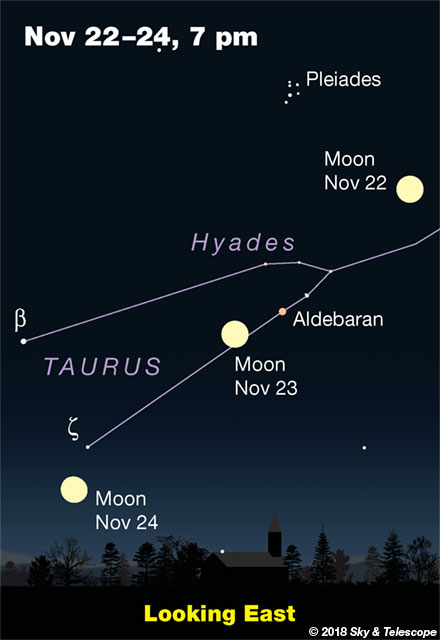
Thursday, November 22
• Full Moon tonight (exact at 12:29 a.m. Friday morning EST). The Moon lights the eastern sky this evening, with the Pleiades faintly visible to its upper left and orange Aldebaran to its lower left as shown here.
Friday, November 23
• Now the Moon shines closer to Aldebaran than yesterday, and on its other side. Watch the Moon draw farther away from Aldebaran through the hours of the night.
Saturday, November 24
• The bright waning gibbous Moon rises around the end of twilight and climbs high through the evening. It's now below the horns of Taurus: Beta (β) and fainter Zeta (ζ) Tauri.
________________________
Want to become a better astronomer? Learn your way around the constellations! They're the key to locating everything fainter and deeper to hunt with binoculars or a telescope.
This is an outdoor nature hobby. For an easy-to-use constellation guide covering the whole evening sky, use the big monthly map in the center of each issue of Sky & Telescope, the essential guide to astronomy.

Once you get a telescope, to put it to good use you'll need a detailed, large-scale sky atlas (set of charts). The basic standard is the Pocket Sky Atlas (in either the original or Jumbo Edition), which shows stars to magnitude 7.6.
Next up is the larger and deeper Sky Atlas 2000.0, plotting stars to magnitude 8.5; nearly three times as many. The next up, once you know your way around, are the even larger Interstellarum atlas (stars to magnitude 9.5) and Uranometria 2000.0 (stars to magnitude 9.75). And read how to use sky charts with a telescope.
You'll also want a good deep-sky guidebook, such as Sue French's Deep-Sky Wonders collection (which includes its own charts), Sky Atlas 2000.0 Companion by Strong and Sinnott, or the bigger Night Sky Observer's Guide by Kepple and Sanner.
Can a computerized telescope replace charts? Not for beginners, I don't think, and not on mounts and tripods that are less than top-quality mechanically (meaning heavy and expensive). And as Terence Dickinson and Alan Dyer say in their Backyard Astronomer's Guide, "A full appreciation of the universe cannot come without developing the skills to find things in the sky and understanding how the sky works. This knowledge comes only by spending time under the stars with star maps in hand."
This Week's Planet Roundup
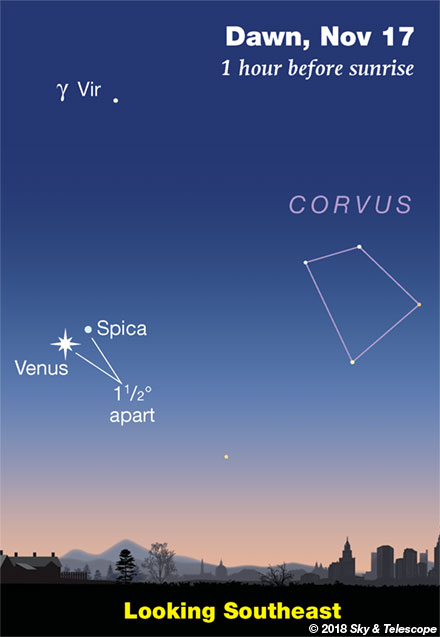
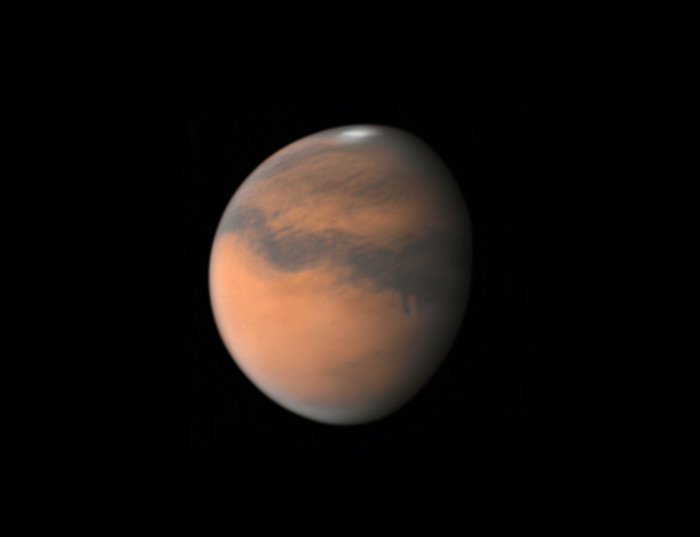
Mercury fades and drops out of sight in the sunset this week.
Venus (magnitude –4.8) is the brilliant "Morning Star" in the east-southeast before and during dawn. It rises as an eerie "UFO" above the eastern horizon almost two hours before first light. As dawn begins to brighten, Venus dominates the east-southeast.
To its right or upper right is Spica, only about 0.5% as bright. Their separation widens this week from 1½° to 3°.
In a telescope Venus is a dramatic crescent, thickening from 12% to 20% sunlit this week. For sharper telescopic views, follow it up higher all the way past sunrise and into the blue sky of day.
Mars (fading from magnitude –0.3 to –0.2 this week) shines highest in the south at nightfall. It sets around midnight.
In a telescope Mars is about 10 arcseconds wide and still as gibbous as we ever see it: 86 percent sunlit. For a Mars map that displays which side is facing Earth at your time and date, use our Mars Profiler.
Jupiter is hidden behind the glare of the Sun.
Saturn (magnitude +0.6, in Sagittarius) is low in the southwest in twilight. You'll find it about 40° below Altair and nearly 60° to the lower right of brighter Mars.
Uranus, near the Aries-Pisces border, is pretty easy to see in binoculars at magnitude 5.7 — with a good finder chart, if you know the constellations well enough to see where to start with the chart.
Neptune, in Aquarius, is harder at magnitude 7.9. After dinnertime they're high in the southeast and south, respectively. Finder charts for Uranus and Neptune.
______________________
All descriptions that relate to your horizon — including the words up, down, right, and left — are written for the world's mid-northern latitudes. Descriptions that also depend on longitude (mainly Moon positions) are for North America.
Eastern Standard Time (EST) is Universal Time (UT or GMT) minus 5 hours.
______________________
"The dangers of not thinking clearly are much greater now than ever before. It's not that there's something new in our way of thinking, it's that credulous and confused thinking can be much more lethal in ways it was never before."
— Carl Sagan, 1996
______________________
"Objective reality exists. Facts are often determinable. Vaccines save lives. Carbon dioxide warms the globe. Bacteria evolve to thwart antibiotics, because evolution. Science and reason are not a liberal conspiracy. They are how we determine facts. Civilization's survival depends on our ability, and willingness, to do this."
— Alan MacRobert, your Sky at a Glance editor
______________________
"Facts are stubborn things."
— John Adams, 1770
 5
5








Comments
Rod
November 16, 2018 at 8:11 am
Venus and Spica put on a show this morning. I observed 0600-0630 EST. The November issue of Sky & Telescope reports Venus is retrograding near Spica the mornings 12-17 Nov and close to 1.5 degrees apart (Fred Schaaf report). Using my telescope at 31x, I could see brilliant Venus crescent shape and Spica in upper left corner, mirror reverse view in the same field of view. Quite a lovely sight for a photo. I observed Venus at 78x too. Venus about 12.5% illuminated and 51 arcsecond size, about -4.6 magnitude, almost as bright as the Full Moon 🙂 Venus was near 0.3253 AU distance from earth while Spica in Virgo close to 250-260 LY distance. Venus and Spica were close to 20 degrees altitude and 124 degrees azimuth at my location while observing, yesterday morning snow moving through but today, clear skies!
You must be logged in to post a comment.
misha17
November 16, 2018 at 3:47 pm
The Pleiades is at opposition around Nov 16. The cluster rises at sunset (but you can't it until the sky darkens) and crosses the meridian at midnight.
You must be logged in to post a comment.
Rod
November 16, 2018 at 8:55 pm
misha17, yes the Pleiades are up now where I am at near 45 degrees altitude and 94 degrees azimuth. I enjoy viewing this open cluster in Taurus, unaided eye, binoculars, and telescope using low power and wider field views. The Moon is also waxing eloquently tonight in Aquarius.
You must be logged in to post a comment.
Rod
November 17, 2018 at 9:10 am
Here is a brief note about the Leonids. I did observe one flash by early this morning near 0530 EST in Maryland. [near 0530 EST, I did observe one Leonid meteor flash by near 3.0 apparent magnitude. I used the star, Ras Elased Australis or eps Leo to estimate brightness. I also observed one polar orbiting satellite, similar apparent magnitude in descending node passing between Leo and Cancer. The Leonids travel very fast, some near 70 km^-s vs. satellites that orbit about 8 km^-s. The Beehive open cluster or M44 was high up and easy to see with unaided eye. The moon set at 0050 EST (USNO time for my location) so did not interfere. Shortly after 0600, clouds started rolling in over the area from WNW and N. We may have clouds later tonight and early tomorrow morning when the peak is expected for the meteor shower. The star Regulus in Leo was up high with the meteor shower radiant. Regulus was near 60 degrees altitude and 158 degrees azimuth for my location while viewing. At 0545 EST, M44 was 68 degrees altitude and 210 degrees azimuth for my location. Perhaps I may see more Leonids early Sunday morning.]
You must be logged in to post a comment.
Tom-Reiland
November 18, 2018 at 7:52 pm
Full Moon is at 12:39 AM EST, Friday morning, Nov 23, not 12:29 AM.
You must be logged in to post a comment.
You must be logged in to post a comment.